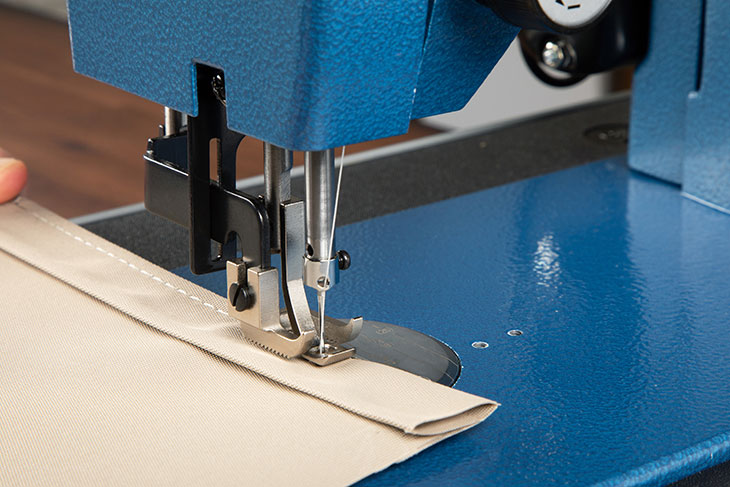*Sponsored content provided by Sailrite
Learning how to sew hems is a basic skill every sewer needs to know. Almost every sewing project involves hems of some kind. There are three types of hems we will discuss and demonstrate in our video tutorial: the single hem, the double hem and the rolled edge hem.
The single hem consists of folding the edge of the fabric over once and sewing a single row of stitches. This is the easiest hem, but it will leave the raw edge of the fabric exposed, so there might be certain sewing applications when you don’t want to use this hem.

The double hem consists of folding the edge of the fabric over once, then folding that doubled edge over again to create a double-folded hem made up of three layers of fabric. The double hem will use up more fabric, so take that into account when planning your project. With this hem, the raw edge of the fabric is hidden inside the fold. Double hems are useful when installing grommets, snaps or other hardware along the edge of canvas because the raw fabric edge is hidden and there are three layers of fabric providing extra strength.
Similar to the double hem, the rolled edge hem hides the raw edge of the fabric within the folded hem. However, the rolled edge hem does not double the folded fabric entirely the way that the double hem does. This means that the rolled edge hem uses up less fabric in creating the hem than the double hem. The rolled edge hem is more complicated than the single hem, but it adds a beautiful finished edge to your project without the added stiffness you get from a double hem.
Our video will show you in detail how these hems are created and sewn. Watch and become an expert in these three popular hemming techniques. Lastly, we’ll show you how to sew binding over the raw edge of fabric. This is another option for hiding fabric edges. We use the Sailrite® 1" Swing-Away Binder to finish the edge of some Sur Last® fabric. Binding in a complementary color adds a beautiful, professional finish to biminis, dodgers, awnings and other marine DIYs.




